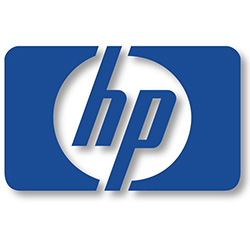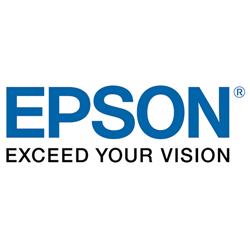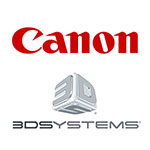In January 2014, I hosted a free online webinar for those with an interest in the 3D printing industry to discuss some of the previous year’s most impactful industry trends. One of the most important takeaways from 2013 was the rumbling of external corporate giants, mostly manufacturers of printers or production equipment, beginning to move toward 3D printing.
Then in April, I held another informational webinar to discuss the impact that 3D printing could have on the existing hardcopy imaging (or “2D” printing) industry. Noted in that presentation was the reluctance of imaging OEMs to move on 3D printing, while the imaging channel seemed much more eager to adopt the technology.
Today, it appears that one of these trends is accelerating, while the other is being flipped on its head, but both are still incredibly relevant to the future of the 3D printing industry. Recent news from Japan that Canon and Ricoh are developing their own 3D printers for commercialization within the next few years brings most of the big names in imaging into the picture.
It appeared for more than a year that many of the most powerful OEMs from the imaging industry — most of which are multi-billion dollar organizations — would be content simply to arm their channel partners with 3D printers from Stratasys and/or 3D Systems. While that still may be true for the next twelve months or so, Canon, HP, Ricoh and Seiko Epson now all have plans to bring their own hardware to market.
Given the connection that Photizo Group shares with the imaging industry and imaging OEMs, and the developing connection that these companies have with the 3D printing industry, I believe it is timely to present an overview of each imaging OEM’s activity as it relates to 3D printing and potential future strategies.
 HP
HP
HP has been the frontrunner in terms of imaging OEMs pursuing 3D printing to date, with a short direct engagement that ended in 2012 and now a looming return to the industry with its own technology that is scheduled to be announced in more detail next month.
As many 3DPI readers likely know, HP partnered with Stratasys in 2010 to sell rebranded Stratasys uPrint machines in Europe. Results were mixed, with HP having some success selling into educational institutions, however the OEM’s channel was not as well prepared to sell additive technologies as the company may have anticipated. Although the program wasn’t a complete flop, it was terminated in 2012 prior to Stratasys’ merger with Objet.
Now, HP is developing a polymeric 3D printing technology, which it will use to target professional rapid prototyping applications, likely with a focus on 3D printing service providers. According to multiple HP executives, the company plans to announce more official details about its plans in 3D printing before the end of the firm’s fiscal year (which ends next month). But that schedule could still be fluid.
 Konica Minolta
Konica Minolta
Now seemingly in the minority, Konica Minolta has not revealed any plans to develop its own 3D printing hardware. It has, however, engaged in one of the most significant relationships with an existing 3D market leader, 3D Systems. Through its North American operations Konica Minolta Business Solutions, Konica will sell a full lineup of 3D Systems printers in the United States through its channel partners and direct sales organization.
Eventually Konica Minolta may feel the pressure to take on the 3D printing industry with its own printers, but for now the firm seems confident in 3D Systems’ current product line, especially the Projet x60 series of binder jetting printers and 3500 series of material jetting printers.
 Seiko Epson
Seiko Epson
Seiko Epson, or more commonly referred to simply as Epson, has made some vague comments on its plans to develop 3D printers of its own. At the beginning of 2014, Epson held its 30th anniversary celebration in Australia, during which, president Minoru Usui stated that the company would be focused on developing printers for production environments. Usui said he wants Epson 3D printers to be able to “make anything,” and that Epson would not be in the business to produce plastic models. Finally, Usui gave the broad timeline for commercialization of “within the next five years.”
These statements may have been more of a blanket PR statement, made at a time when 3D printing hype was at its zenith. Some of Usui’s comments were dismissive about the current state of 3D printing. While Epson may indeed be working today to develop a production-level additive manufacturing system, right now most signs indicate that it is not a very high priority for the company at this point. Usui’s vision of a production 3D printer that can print almost anything, as well as a vague and lengthy timeline, don’t inspire much confidence that Epson will release anything on this front for a long time, if at all.
I anticipate that in order to achieve a production level additive manufacturing system that has the capability to print in multiple industrial materials (especially metals), Epson would have to stray quite far from its mainstay ink jet technology.
 Canon
Canon
Canon has definitely been the sneakiest imaging OEM with regards to the 3D printing industry — its sole activity before the recent news reported by Nikkei has been that Canon Marketing will act as a reseller of 3D Systems printers in Japan. That all changed earlier this week when it was reported that Canon is developing its own 3D printers and has even completed a prototype printer. Plans for commercialization however, appear to be further off, sometime in the next several years.
Interestingly enough, Canon actually operates a manufacturing organization known as Canon Virginia (CVI) in the United States, which previously served Canon manufacturing needs exclusively, but now is open to serve other OEMs’ manufacturing business. CVI’s capabilities include mold and pattern making through a variety of traditional techniques, and the facility serves industries such as medical, consumer products, automotive and packaging — all markets that are becoming more interested in additive production techniques.
Ricoh
Perhaps the biggest breaking news is that Ricoh is planning to resell Stratasys and 3D Systems 3D printers, operate a rapid prototyping services business, and develop its own 3D printer line — all in Japan. Reports from the Nikkei state that Ricoh hopes to commercialize its own 3D printers in 2016. Although details regarding the printers themselves are scarce, the targeted price point is apparently somewhere in the “professional” category of $46,000-$180,000.
Ricoh will apparently be setting up two offices in Japan to support its reselling and prototyping operations in the region by the end of the month. The company already has a Japanese website set up for “Ricoh Rapid Fab” services.
As the sole supplier of ink jet print head technology to Stratasys, Ricoh may or may not create some interesting competitive pressures within the market with these activities. For now, it appears business as usual.
 Xerox
Xerox
Most people wrote Xerox out of the 3D printing picture when the company sold part of its solid ink engineering team to 3D Systems, a team which has been instrumental in providing the foundation for 3D Systems’ ink jet-based technologies. The world figured Xerox might be cashing out and writing 3D printing off as too niche a market for it to get more involved in, given the company’s IT services direction.
This, however, may not end up being true. Recently, Xerox has posted job listings for a Vice President of 3D Printing, with responsibilities including overseeing go-to-market strategies for 3D printing in the United States, in order to become a leader in the 3D printing space. Although this may not be considered concrete evidence of Xerox’s intent with 3D printing, it certainly indicates the company is now moving into the space in some way that would appear to be beyond being a supplier of ink jet technology to 3D printer manufacturers.
Final Thoughts
For months, even years, the jury has been out on whether “printing giants” would eventually influence or control the 3D printing industry. Although whether they will control the industry in the future is certainly still up for grabs, there’s no longer any question that the giants are lumbering in the direction of 3D printing. Their size and associated resources alone suggest that this activity will indeed have some influence on the continued development of the market.
The biggest risk facing imaging OEMs in regards to 3D printing is moving too slowly. Many seem to be focusing on professional rapid prototyping-esque solutions, which have been around for several decades. Thus far, few seem to be focusing efforts on 3D printing’s two biggest growth areas, which are low-cost 3D printers and metals-based additive manufacturing systems. As is often common with multi-billion dollar companies moving into new areas, for now we just have to sit back and wait.
Photizo Group is a specialty market research and consulting firm serving the hardcopy imaging and 3D printing industries.


 HP
HP Konica Minolta
Konica Minolta Seiko Epson
Seiko Epson Canon
Canon Xerox
Xerox